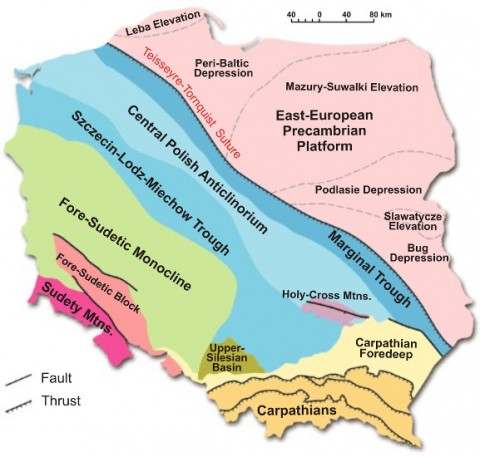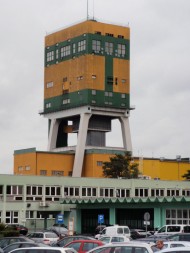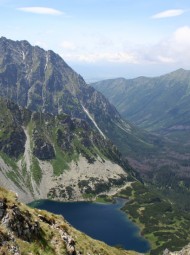Redstone Exploration Services
Poland
Poland
- Population:
- 38.5 M
- Area:
- 312,679 km2
- Capital:
- Warsaw
- Largest city:
- Warsaw
- Languages:
- Polish
- Government:
- Parliamentary republic
- President:
- Bronisław Komorowski
- Prime Minister:
- Donald Tusk
- GDP (PPP):
- 800.9 B$
- Currency:
- Polish zloty (PLN)
- Time zone:
- UTC+1 (Summer: UTC+2)
- Calling code:
- +48
- Driving on:
- right
- Flag:

- Coat of Arms:


Poland is a Central European country, member of the European Union, richly endowed in mineral resources and possessing a long mining history. Most of its natural resources concentrate in the south-west of the country, in particular copper-silver and zinc-lead ores, but Poland is also host to major deposits of hard coal, lignite, sulfur, salt, and industrial minerals. In the last five years, following a major transition of the country to a free-market economy and its accession to the E.U., there has been a tremendous increase in the presence of foreign exploration and mining companies, and a major ground staking rush has been taking place, which also encompassed shale gas and oil. At the present moment, the most significant entities exploring for & mining metals in Poland are: the partly Polish State-owned KGHM Polska Miedz S.A. – ranked as world’s 6th producer of copper, 1st producer of silver, and 3rd producer of rhenium; the Canadian Lumina Copper through its subsidiary MiedziCopper (exploration for Cu-Ag); the American Electrum Group through its subsidiaries Amarante Investments and Slasko-Krakowska Kompania Gornictwa Metali (exploration for base metals and gold); the Zakłady Górniczo-Hutnicze Bolesław S.A. – a world-class zinc-lead producer for over four decades; the Canadian Hunter Dickinson Group through its subsidiary Rathdowney Resources (exploration for Zn-Pb); as well as a number of foreign exploration juniors, which together contributed to making the ‘metal’ claims map of Poland increasingly crowded. Poland is also a major producer of hard coal, with dozens of underground mines in operation and exploitable reserves of 60,000 Mt hard coal (in 126 separate deposits) and 39,000 Mt of lignite, making Poland’s coal mining industry one of the largest foreign income earners.
The government agency responsible for oversight of the mineral industry in Poland, including all exploration permitting and regulatory matters is the Ministry of the Environment, located in Warsaw, and specifically its Department of Geology and Geological Concessions. The granting of prospecting/exploration/mining permits in Poland is governed by the recently amended Polish Geological and Mining Law of 2011. The mineral rights for major commodities, such as hydrocarbons, hard coal and brown coal, metallic ores, salt deposits, thermal and therapeutic waters are owned by the State, whereas industrial commodities, such as sand, gravel, etc. are in the possession of the surface rights owners. The gathering of geological information on the country, the management of this information, as well as conducting geological research pertains to the Polish Geological Institute (PGI), located in Warsaw. Some geological research is also conducted by the PAN – Polish Science Academy, as well as by the geology departments of various universities, especially the University of Warsaw and the Akademia Górniczo-Hutnicza (AGH) in Kraków.

Poland is located at the junction of three major geological provinces: the northeastern part of the country belongs of the Precambrian East European Platform, the central-western part – to the Paleozoic Platform of Central and Western Europe, and the country’s south is occupied by the Carpathians and the Carpathian Foredeep, which belong to the Alpine province (see Fig. 2).
The Precambrian Platform is composed of a crystalline basement, gently dipping towards the south-west, and of a Phanerozoic platform cover. The Paleozoic Platform consists of consolidated Paleozoic rocks and a Permian-Mesozoic-Cainozoic platform cover. The igneous-metamorphic Sudety Mountains and the Fore-Sudetic Block in the south-west of Poland are part of the Variscan orogen, which is straddling the borders with Germany and the Czech Republic. The Upper-Silesian block to the east consists of a large basin filled with a thick clastic sequence hosting major hard coal deposits. The Holy Cross Mountains are mainly built of Lower- and Middle-Paleozoic clastic and carbonate rocks. Finally, the Carpathian orogen in the south consists of a thrust-and-fold belt of Cretacous and Paleogene flysch rocks.
The bulk of the Polish Lowlands is covered by thick epicontinental Tertiary sediments, which rest on Mesozoic platformal rocks, many of which are carbonates. Continental Pliocene and Miocene deposits occur in the central part of the Tertiary basin, while in the eastern, western, and partly northern parts of the country there are also marine and continental rocks of Paleocene, Eocene, and Oligocene age. The whole of the Polish Lowlands is covered by a thick mantle of Quaternary sediments, related to the multiple glaciation events that affected the region. The thickness of these sand/gravel/till deposits decreases southwards, from over 100m in the north to only several meters in the south.
Copper mining in Poland is in the hands of KGHM Polska Miedz S.A., which since the 1960s operates four underground mines in the LGOM area (Lubin-Glogow Copper District). These are the Rudna, Lubin, Polkowice, and Sieroszowice mines, producing mainly copper and silver, but also rhenium, gold, platinum, palladium, nickel, arsenic, selenium, and lead. What is being mined there is essentially one giant kupferschiefer copper stratiform deposit, which stretches out for over 600 km2 and is world’s largest deposit of this type, hosting about 10% of world’s total copper resources, at an average grade of 1-2% Cu and 150 g/t Ag. In contrast to the still blooming copper mining, the Polish zinc-lead mining declined in the recent years, with the successive closure of a number of large underground mines (Trzebionka, Olkusz, Boleslaw), exploiting the stratiform, Mississippi Valley-Type deposits of the Cracow-Silesian district, believed to have hosted a pre-mining resource of ca. 700 Mt zinc and lead combined, at an average grade of 6% metal. At this moment, the only producing mine is Pomorzany, operated by the Zakłady Górniczo-Hutnicze Bolesław S.A. near Olkusz, and boasting a past production plus reserves figure of ca. 100Mt @ 4.1% Zn and 1.3% Pb.
A map of the mineral deposits of Poland (modified from Osika, 1990) is shown below, and a bedrock geology map of the country follows. If you wish to learn more about the country’s mineral legislation, mining, and exploration opportunities, please contact us.








